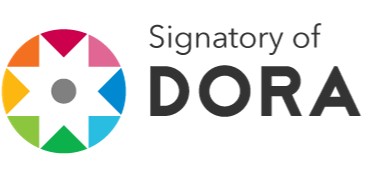Editorial Process
The RCA editorial process is designed to ensure the quality, relevance, and scientific rigor of all published articles. It consists of two main stages: evaluation and publication.
1. EVALUATION STAGE
All manuscripts received by RCA undergo a strict evaluation process, which consists of three phases:
a) Preliminary Assessment (Editorial Review)
Initially, the Editorial Team reviews each manuscript to ensure it meets the journal's basic requirements. This phase verifies:
• Thematic Relevance: That the work aligns with the focus and scope of RCA.
• Compliance with Author Guidelines: The structure, length, formatting, and citation style (APA 7th edition) are checked.
• Originality: All manuscripts are analyzed using similarity detection software (iThenticate/Turnitin) to prevent plagiarism, self-plagiarism, or redundant publication. As a benchmark, the similarity check result should be below 25%, although the final decision depends on editorial analysis. RCA does not consider works that have been previously published or are under consideration by another journal.
If the manuscript passes this initial review, it proceeds to peer review. Otherwise, it will be returned to the authors with a clear justification for the decision.
b) Expert Peer Evaluation (Peer Review)
RCA uses a double-blind peer-review system, in which the identities of both authors and reviewers remain anonymous.
• The manuscript is sent to a minimum of two expert reviewers in the thematic area. During the submission process, authors may suggest at least 2 potential reviewers and include this information on the title page. However, the Editorial Team reserves the right to use these suggestions or not, to ensure the impartiality of the process.
• Reviewers assess the quality of the work based on criteria such as originality, methodological rigor, clarity of results, soundness of the discussion, and contribution to knowledge in the agricultural sciences.
• RCA relies on a community of external reviewers (national and international) unaffiliated with the Universidad de Cundinamarca to ensure an impartial evaluation. In recognition of their work, a list of reviewers who have collaborated with the journal will be published annually.
c) Editorial Decision
Based on the feedback and recommendations from the peer reviewers, the Editor makes one of the following decisions:
• Accepted for Publication: The article is accepted without requiring changes.
• Publishable with Changes: The article is publishable but requires minor adjustments indicated by the reviewers. Authors will have 15 calendar days to submit the corrected version.
• Resend for Review: The article has potential but needs substantial changes that may require a second round of peer review. Authors will have 30 calendar days to resubmit the revised manuscript.
• Not Publishable (rejected): The article does not meet the quality standards or scope of the journal. The reviewers' comments are sent to the authors for their feedback.
2. PUBLICATION STAGE
Once an article is accepted, the editorial production stage begins.
• Copyediting: A professional copyeditor reviews the manuscript to ensure coherence, clarity, and grammatical correctness. The final version is sent to the authors for approval.
• Typesetting and Layout: The article is formatted according to the journal's design for digital publication (PDF). A proof (galley) is generated and sent to the authors for final review and approval before publication.
• Originality Declaration and Grant of Rights: Authors must sign a form in which they declare the originality of the work, grant publishing rights, and agree to publish under the Creative Commons Attribution-NonCommercial-NoDerivatives (CC BY-NC-ND) license.
3. EDITORIAL PROCESS TIMELINES
RCA is committed to maintaining an efficient editorial process. The estimated average timelines are:
• Preliminary Assessment: 1 to 2 weeks.
• Expert Peer Review: 8 to 12 weeks.
• Final Editorial Decision (after revisions): 1 to 2 weeks.
• Publication Process (post-acceptance): 4 to 6 weeks.
Authors can track the status of their manuscript at any time via the OJS platform.
4. ACCEPTANCE RATE
RCA is committed to the transparency of its editorial process. Annually, the journal will publish updated statistics on its website regarding the number of articles received, those rejected at initial review, and those finally accepted for publication, so that the academic community is aware of its selectivity indicators.






